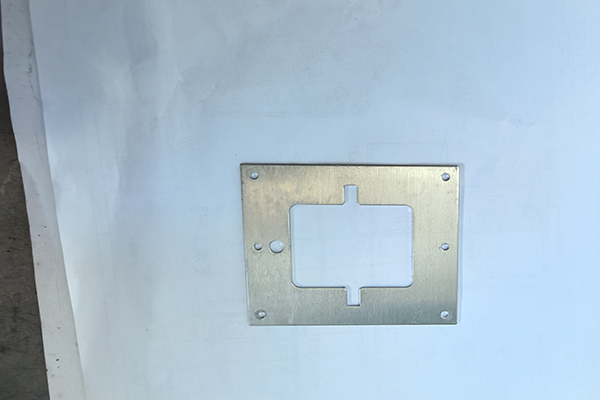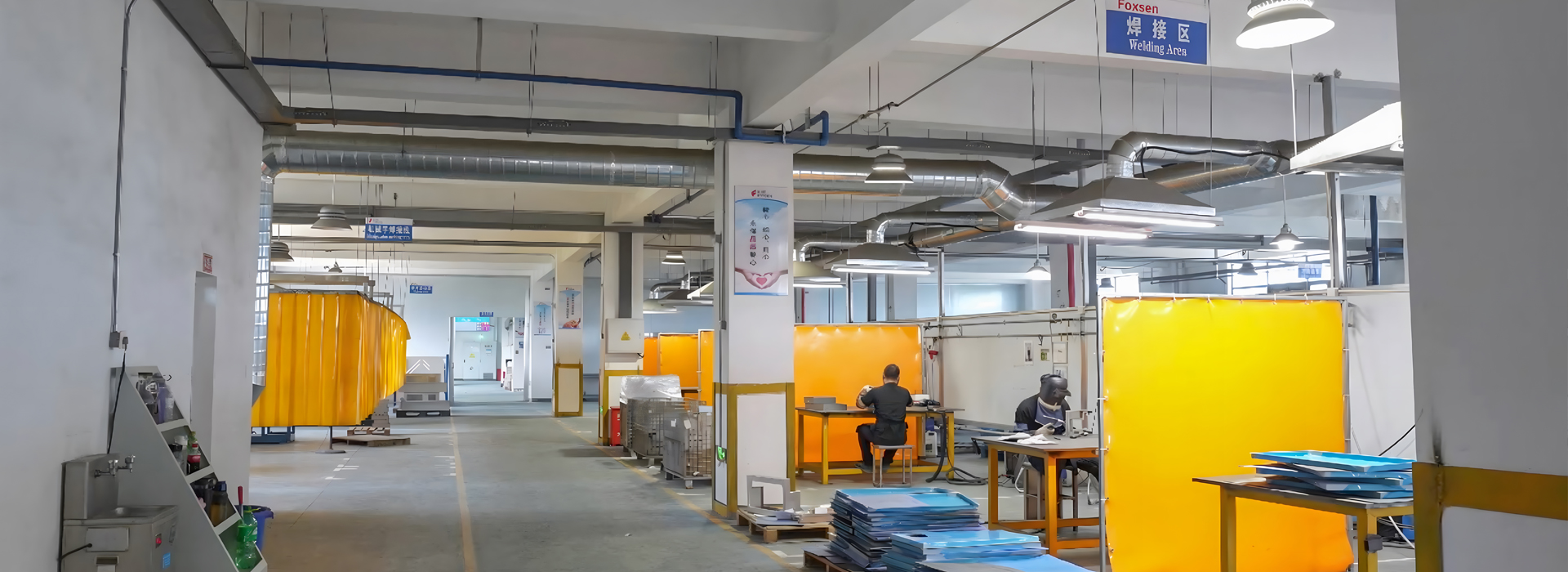
When selecting a sheet metal Copper Machined Part for precise work, I consider its features and how they influence usage. Copper is excellent due to its high electrical conductivity, making it ideal for electrical applications and telecommunications. The ease of shaping depends on the alloy composition and the manufacturing process. For instance, pure copper becomes less robust as the sheets increase in thickness, but heating it can enhance its stability.
As factories globally recover, choosing the right sheet metal Copper Machined Part is crucial. With the rising demand for copper in construction and technology, making informed choices can lead to cost savings and improved performance.
Key Takeaways
Pick the right copper type for your project. Pure copper works well for electrical jobs, while copper alloys are stronger for building tasks.
Think about thickness. Thicker sheets are stronger, but thinner ones bend easily. Exact measurements are key for good machining.
Check how easy it is to machine. Softer copper is simpler to use, but alloys stay strong. This helps get great results in CNC machining.
Look at corrosion resistance. Copper fights rust naturally, but coatings can protect it more in tough conditions.
Weigh cost and quality. Compare pure copper and alloys to choose the best for your project, keeping performance and budget in mind.
Types of Copper Sheet Metal

Pure Copper: Properties and Uses
Pure copper has special qualities that make it very useful. It is heavy, with a density of 8.92 g/cm³, and works well for strong parts. Its excellent ability to carry electricity makes it great for wires, cables, and motors. It also transfers heat well, so it’s used in cooling systems and heat exchangers.
Copper resists rust in wet places by forming a protective layer. It is soft and not very strong, but it can be shaped easily. This makes it useful in many industries like cars and electronics.
Here’s a simple table of its features and uses:
Pure copper is used in many areas:
Cars: Wires, switches, and generators.
Chemical and food: Pipes, tanks, and heat exchangers.
Buildings: Roofs, walls, and water pipes.
Electronics: Cooling systems and cryogenics.
Copper Alloys: Strength and Easy Shaping
Copper alloys are stronger and easier to work with than pure copper. Alloys like copper beryllium (Cu-Be) are tough and can handle heavy loads. They are perfect for building strong structures.
Even though they are stronger, copper alloys still carry electricity well. This makes them useful for jobs needing both strength and conductivity. Cu-Be alloys are known for working well in tough conditions.
Copper alloys are great for detailed designs because they are easy to shape. They are used in planes, communication tools, and big machines.
Choosing between pure copper and alloys depends on the job. Pure copper is best for electricity and heat, while alloys are better for strength and tough tasks.
Key Considerations for Sheet Metal Fabrication
When using copper sheet metal, I focus on three main things: thickness, machinability, and corrosion resistance. These factors help ensure the product works well and lasts long.
Thickness and Dimensions
The thickness of copper sheet metal affects how it is used. Thicker sheets are stronger and last longer. Thinner sheets bend easily and are simpler to shape. Measuring thickness accurately is very important for good results.
Copper sheet thickness is measured by gauge numbers. Higher numbers mean thinner sheets. For example:
A 10-gauge sheet is thicker than a 30-gauge sheet.
Different metals have different thicknesses for the same gauge, so checking details is key.
Here’s a comparison of gauge thickness for various metals:
For copper sheet metal, precise measurements are crucial. This is especially true for CNC machining, where small errors can cause problems.
Machinability Ratings
Machinability means how easy it is to cut or shape a material. Copper is great for machining, but the ease depends on the type. Pure copper is softer and simpler to work with. Alloys like C110 are stronger but still easy to machine.
When choosing copper sheet metal, I look at these features:
Tensile Strength: Both Copper C101 and C110 are strong, with 282.685 MPa.
Hardness: They have a hardness of 40 HRB, making them easy to shape.
Cost: Copper C101 costs more than C110, so I compare prices with project needs.
Here’s a comparison:
By knowing machinability ratings, I can pick the best material for CNC machining. This ensures the work is fast and high-quality.
Corrosion Resistance
Copper naturally resists corrosion, making it great for industrial use. It forms a protective layer when wet, stopping damage. In tough conditions, extra protection may be needed to make it last longer.
Research shows coatings and inhibitors can protect copper up to 95%. For example:
Extracts from Pyracantha fortuneana work well in acidic environments.
Amino acid derivatives, like MPP, improve protection when used in higher amounts.
These methods show why choosing the right protection is important. Using good coatings and inhibitors keeps copper parts reliable, even in harsh places.
Because of its corrosion resistance, copper is perfect for electronics, telecoms, and building projects. It lasts longer and saves money on repairs.
Cost and Availability
When choosing copper sheets for precise work, I think about cost and availability. These are important for making sure projects succeed, especially in industries needing custom metal parts.
Copper sheet prices change because of market factors. Experts say the global copper market will grow a lot. It may rise from USD 277.92 billion in 2024 to USD 291.12 billion in 2025. This shows a yearly growth rate of 4.75% from 2025 to 2033. But this growth has problems. Political issues can make prices unstable, which makes planning hard. For example, price jumps in February 2025 showed how tricky the market can be. This makes predicting costs and investments harder.
Availability is also very important. Copper sheets are needed in construction, electronics, and cars. High demand can cause supply chain problems, especially during economic recovery or political troubles. Working with suppliers helps solve these issues. They share stock updates and alternatives, keeping projects on schedule.
To save money, I compare the material’s quality with its price. Pure copper costs more but works well for jobs needing high precision. Copper alloys are cheaper and strong, making them good for building and decoration.
💡 Tip: When planning CNC machining or metal work, think about price changes. This helps avoid surprise costs and keeps the project on track.
Matching Copper Sheet Metal to Applications

Electrical Applications: High Conductivity Needs
For electrical projects, I pick copper sheet metals with great conductivity. Grades like 101 and 110 are perfect for high-performance tasks. Their conductivity is measured using the International Annealed Copper Standard (IACS).
Copper 110 has slightly better conductivity than Copper 101. I use it for connectors, circuit boards, and other parts needing efficient conduction. Adding graphene to copper sheets improves conductivity to 108% IACS. It also boosts tensile strength by 56%. This makes copper-graphene nanocomposites great for advanced systems.
For CNC machining, choosing the right copper sheet metal ensures accuracy. I always check machinability and quality for the best results.
Structural Applications: Strength and Durability
For structural projects, I choose copper sheet metals that are strong and durable. Pure copper changes its strength and flexibility when processed. Studies show severe plastic deformation makes it stronger and more flexible. Multilayered copper sheets made by roll bonding have better tensile strength and resist electricity well.
The strength of these sheets improves with more processing cycles. Flexibility may drop at first but improves with more work and heating. This shows why picking the right material is key for structural jobs.
Copper alloys are also important for custom metal work. They are strong and resist rust, making them good for machines and tools. Balancing cost and quality is vital when choosing materials for these projects.
Decorative Applications: Aesthetic Appeal
Copper looks great, so it’s popular for decorative uses. It lasts long and resists rust, keeping its beauty intact. Architects have used copper for centuries to make amazing designs. Modern designers like Frank Lloyd Wright still use it creatively.
Copper comes in many colours, from shiny metallic to greenish patina. Over time, this natural change adds charm to buildings and art. Its classy look makes it a top choice in architecture.
For decorative sheet metal work, I focus on machinability. CNC machining helps create detailed designs with high quality. Copper’s special features make it perfect for both useful and beautiful items.
💡 Tip: When picking copper sheet metals for decorative projects, think about the finish and patina. This ensures the final piece looks and works as planned.
Best Practices for Choosing Copper Sheet Metal Parts
Asking Suppliers for Advice
When picking copper sheet metal parts, I ask suppliers for advice. They share useful details about the material and how it can be machined. Suppliers often mention copper's great ability to carry heat and electricity. This makes it perfect for things like busbars and wire connectors. They also point out its shiny reddish-orange colour, which looks nice for decorations.
Suppliers with advanced tools can make detailed and accurate parts. Many use 3-axis and 5-axis CNC machines for precise work. This flexibility helps me pick the right copper sheet metal. Whether I need strong parts or fancy designs, they guide me to the best choice.
Checking Temper Types
Knowing temper types is important when using copper sheet metal. Temper shows how hard or flexible the material is. This affects how easy it is to shape and how strong it will be. For example, soft temper copper is easy to bend but not very strong. Hard temper copper is tougher and lasts longer.
I always choose the right temper for the job. For detailed machining, softer tempers are better as they protect tools and give a smooth finish. For strong structures, harder tempers are best because they handle heavy loads. By checking temper types, I make sure the final product works well and looks good.
Finding a Balance Between Cost and Quality
Balancing cost and quality is very important in machining projects. Copper works well for machining, but its price changes based on type and market trends. I compare pure copper and alloys to find the best option. Pure copper is great for conductivity and machining, while alloys like brass are cheaper and eco-friendly.
Studies show copper electrodes remove material faster and leave smoother surfaces than brass. But brass is better for the environment, making it a good choice for some jobs. By thinking about these points, I pick a material that meets my needs without spending too much.
💡 Tip: Always think about cutting speeds and cooling methods. These can improve results and save money.
Choosing the right copper sheet metal helps with accurate machining. I check the material type, thickness, and how easy it is to shape. I also think about what the project needs. For instance, research shows dry machining with coated tools makes surfaces smoother. It also improves accuracy when using copper alloys like aluminium bronze. Using methods like Taguchi DOE makes the process even better.
By focusing on these points, I get the best results for every project.
FAQ
What is the best type of copper sheet metal for electrical applications?
Copper 101 and Copper 110 are great for electrical work. Copper 110 conducts electricity slightly better than Copper 101. Both are very pure, making them perfect for wires, connectors, and circuit boards.
How do I measure the thickness of copper sheet metal?
Use a micrometre or gauge tool to check thickness. Gauge numbers show how thick the sheet is. Higher numbers mean thinner sheets. For precise work, always measure carefully to avoid mistakes.
Can copper sheet metal resist corrosion in harsh environments?
Copper stops corrosion by forming a protective layer. In tough places, coatings or inhibitors can help. Plant extracts or amino acids improve protection, making copper last longer in wet or salty areas.
💡 Tip: Clean and check copper parts often to keep them strong.
What factors affect the cost of copper sheet metal?
Copper prices change with demand, type, and processing. Pure copper costs more because it conducts electricity well. Alloys like brass are cheaper but still work for many jobs. Compare costs with project needs to save money.
How do I choose between pure copper and copper alloys?
Pure copper is best for carrying electricity and heat. Copper alloys, like copper beryllium, are stronger and last longer. They’re good for heavy-duty tasks and tough conditions.
💡 Note: Pick the material that fits your project’s needs.





